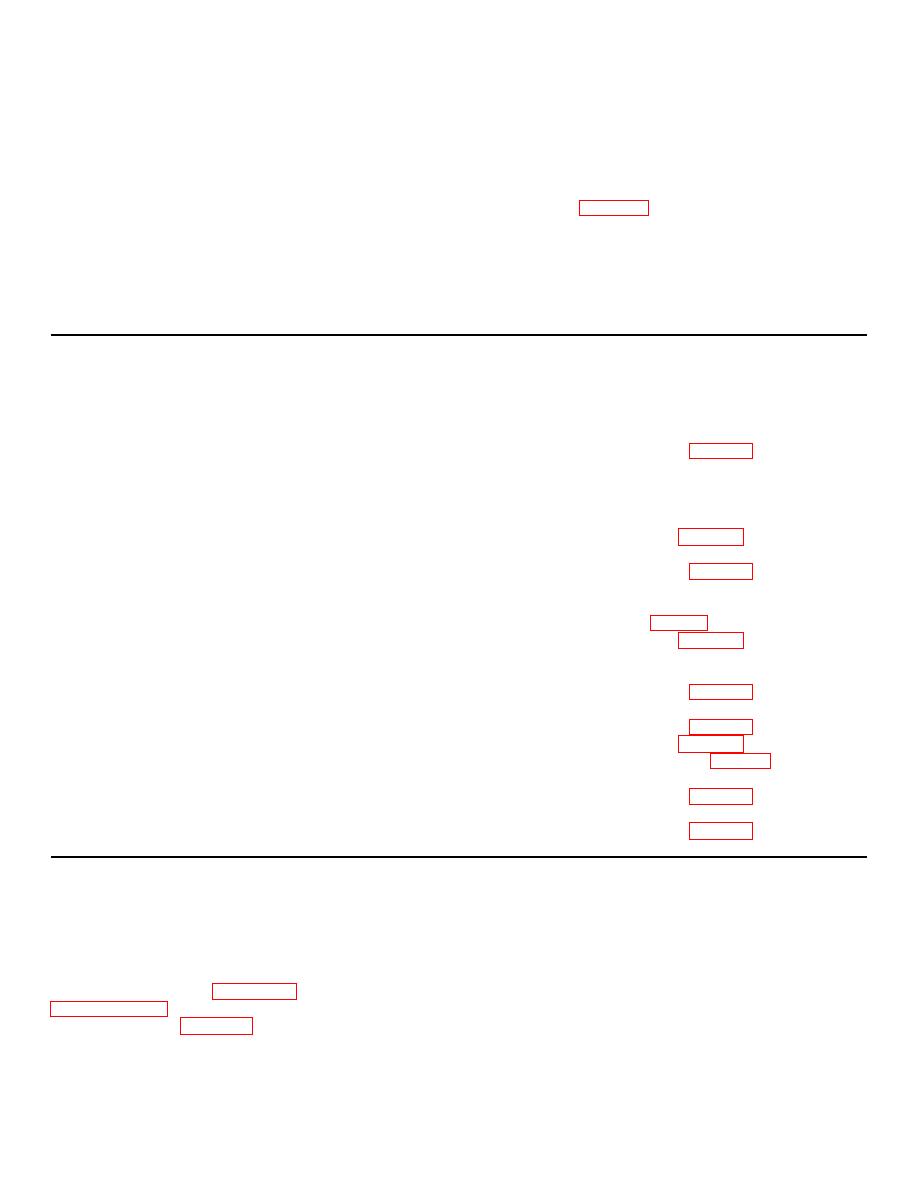 |
|||
|
|
|||
|
|
|||
| ||||||||||
|
|
 TM 11-5820-549-50-1
it must have good voltage regulation and low ac ripple.
2-5. Troubleshooting Chart
Good regulation is important because the output voltage
a. Use of Chart. The more common troubles are
of the battery eliminator (which has poor regulation) may
listed in the troubleshooting chart below.
If the
exceed the maximum voltage rating of the integrated
operational symptom is known, locate the symptom in
circuits in the equipment being tested. A battery
the Indication column.
eliminator that has poor ac filtering will create a false
b. Conditions for Tests. All voltage checks in the
indication of poor filtering in the equipment being tested.
chart are to be made with the PP-3514/U connected to
b. Test harness for connecting the power supply to
the receiver (para 2-4). All resistance measurements
the AN/PRR-9(XE-9) can be made by using the
and continuity checks are to be made without power to
connector from a discarded Battery, Dry BA-4534/U, or
the receiver and the ohmmeter on a higher than X1
a similar connector such as Switchcraft Micro-Jack type
range.
TR2A. Either of these connectors will fit the battery
c. Troubleshooting Chart
connector of the AN/PRR-9(XE-9). The tip of the
battery connector is B + and the sleeve is B-.
Indication
Probable trouble
Procedure
1 No audio
a. Defective J5
a. Examine J5 for open switch
element. Replace J5 if
required (pars 3-2).
b. Defective Z3
b. Measure voltages and resistances
at Z3 (para 2-6).
2 Audio received with headset,
a. Defective LS1
a. Replace LS1.
but not with horn transducer.
b. Defective J5
b. Examine J5 for proper action of
switching element. Replace
J5 if required (para 24).
3 No squelch
a. Misalinement
a. Realine (para 3-3 through 3-8).
b. Defective Z4
b. Measure voltages and resistances
at Z4 (para 2-6).
c. Defective S1
c. Make continuity test of S1. Replace
control assembly, if S1 is faulty
4 Weak reception
a, Misalinement
a. Realine (para 3-3 through 3-8).
b. Defective antenna connector J2
b. Mechanically adjust or replace J2.
c. Defective Z1
c. Measure voltages and resistances
at Z1 (para 2-6).
d. Defective Z2
d. Measure voltages and resistances
at Z2 (para 2-6).
5 No reception
a. Misalinement
a. Realine (para 3-3 through 3-8).
b. Defective Y1
b. Replace Y1 (fig. 2-2).
c. Defective Z1
c. Measure voltages and resistances
at Z1 (para 2-6).
d. Defective Z2
d. Measure voltages and resistances
at Z2 (para 2-6).
board. Positive connection is made to the indicated
2-6. Voltage and Resistance Measurements
pad. All voltages shown on the chart are positive unless
a. General. All measurements are made with the
marked with a negative sign (-). Set the PP-3514/U for
electronic unit assembly removed from the case (TM
3.2 volts. All voltage readings within 10 percent of
11-5820-549-12-1).
Voltage
and
resistance
those shown should be considered normal.
measurements are given for all significant circuit points.
Identification of integrated circuit elements is given in
c. Resistance Measurements.
All resistance
the schematic diagram, figure 4-10 and in the table in
measurements are made with the negative side of the
multimeter connected to ground of the printed circuit
board pads refer to figure 2-1.
board. Resistance measurements in circuits where
integrated circuit elements are located may be expected
b. DC Voltage Measurements.
All voltage
to vary considerably from the typical values shown.
measurements are made with the negative side of the
TS-352B/U connected to ground of the printed circuit
2-2
|
|
Privacy Statement - Press Release - Copyright Information. - Contact Us |